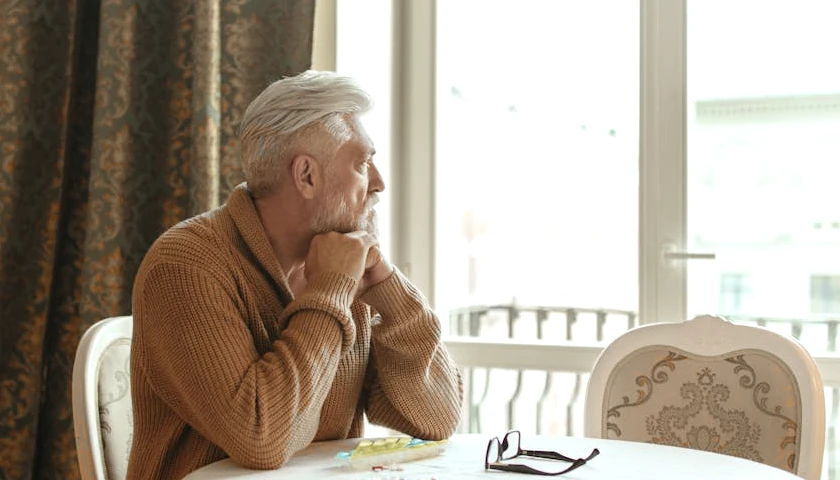by Christopher Roach
Whether the economy is currently bubbling along or facing a slowdown, a slow-motion disaster is about to create a real crisis for the government, our future politics, and the shrinking middle class. Half of households have no retirement savings.
This is just one of many shifts in the economy that reflect the declining fortunes of the middle class. Wages have remained mostly flat for most workers—particularly those without a college degree—since the early 1970s. Recent high rates of inflation further cut into the ability of the self-identified middle class to make ends meet. But the biggest change has been the abolition of employer-provided pensions and their replacement with rickety and self-managed 401k savings plans.
All of this will only get worse over the next few decades. Social Security benefits are currently extremely modest. For those who do not own homes, rising rents will further cut into their ability to maintain a toehold on middle-class existence, assuming they can remain housed at all.
Who Gets to Retire?
It’s easy to think this is extreme, as retirement looks pretty good for most baby boomers. They are the wealthiest generational cohort, often benefiting from pensions, which are supplemented by real estate holdings, 401Ks, and IRAs. This prosperity is distributed unevenly, however.
For every retiree hitting the cruise ship circuit or playing golf, many others have learned too late that they may have to work much longer than they anticipated. The game changed abruptly during their lifetimes, as major companies shed defined benefit plans and replaced them with voluntary retirement accounts managed by workers. As this momentous change took place, the urgency of the moment was not impressed upon workers, and generational optimism blinded many to the difficult road ahead.
The idea of an average person managing their own retirement has always struck me as fanciful. Under the 401k regime, workers have to determine how much to save, in which asset classes to invest, and at what rate to withdraw funds, managing significant risk every step of the way. The advice workers get often comes from non-fiduciary advisors, who steer them towards high-cost mutual funds and other investments that yield higher commissions for the advisors.
Obviously, there are a lot of factors contributing to individual and collective disasters, including, in this case, a consumer-oriented economy, social pressure to keep up with the Joneses, and an increasingly expensive and ineffective health care regime. But even those who play by the rules can face significant financial challenges that imperil the possibility of retirement: a child having a medical emergency, job loss, or a divorce. These life events encourage people to raid or take loans from their 401K because it is typically the largest and most liquid savings people have, if they have any at all.
Thus, 401Ks are either chronically underfunded or nonexistent for most people. As a result, we are fast becoming a two-tiered society: those who will be able to retire and those who won’t.
System Outsiders Are Not Happy
The system, broadly understood, has insiders and outsiders, beneficiaries and payors. Wall Street investors, health care administrators, federal employees, government contractors, academics, media figures, the managerial class, and the welfare-using idle poor are all system beneficiaries, and they are represented by the Democratic Party. For system beneficiaries, there are pensions, cost of living adjustments, days off for obscure holidays like Washington’s Birthday, civil service protections, and, in many cases, higher wages.
The old bargain of public sector employment involved a trade between wages and security. The jobs paid less, but they were less dependent on the business cycle and had more protections than private-sector “employment at will.” But these days, being a system insider is often an embarrassment of riches, where higher wages combine with higher job security. Access, of course, is more difficult for white males and those otherwise unfavored by the system, but this does not bother most of the people who are already inside the club. Widespread nepotism creates an additional safety net for the children of system loyalists.
Outside of this group, there is great variance in lifestyle and income, including everyone from the millionaire owner of the local Toyota dealership to the handyman living in a doublewide and barely making ends meet. What both have in common is that neither got where he is because of assistance from the system. Neither of them interacts with the federal government, universities, the healthcare system, or Wall Street very often, and, when they do so, it is usually a negative experience, like facing a shakedown by a regulator or waiting on permission from some indifferent bureaucracy.
Instead of getting benefits from the government and the system as a whole, these outsiders are more frequently victimized or insulted by it. They see the same government that could care less when Minneapolis and Seattle were burning in 2020 make a huge fuss over the events of January 6, where the only person killed was an Air Force veteran shot by a trigger-happy Capitol Police officer.
Similarly, when their homes and mortgages went underwater in 2008, struggling homeowners got very little in the way of relief, even as Wall Street was feted with the TARP program bailout. People that would never steal so much as a nickel wondered why Wall Street tycoons who gambled, speculated, and lied on a grand scale were never prosecuted during the Obama years.
Later, during the COVID craziness, many small businesses faced failure and large financial losses because of lockdowns, even as large corporations like Walmart were labeled “essential businesses” and reaped the gains.
The End of Private-Sector Pensions Magnifies the Problem
The division of those inside and outside the system is never more stark than in relation to retirement. It sneaks up fast. Generation X and the Millennials, who are now hitting their 40s, are realizing that they have limited time left to meet their goals. Some of each cohort is still saddled with rising rental payments and the albatross of student loans, in spite of Biden’s best efforts to buy votes. At the same time, they are now having to put their own kids through college, pay thousands for high-deductible Obamacare insurance plans, pay twice as much for groceries, and simultaneously catch up with the retirement savings that were hard to accrue during the earlier, lower-wage phases of their careers.
The old pension regime reflected a more durable social contract, and it recognized human nature for what it is. We all know it’s hard for most people to save. Just as Social Security reflects some sensible paternalism about people’s ability to prepare for old age, so too did the old pension system.
This system also reflected the pre-global corporate era. Corporations were once rooted in their communities and wanted to retain skilled workers. They received significant legal benefits for their existence—including limited liability—and the deal required a certain amount of intergenerational commitment, which continued until the extreme financialization and outsourcing trends of the 1990s and 2000s.
Today, government workers and a handful of union members have pensions, but almost no one else does. Do those government workers getting pensions ever wonder what will become of their private sector neighbors who pay for all of this?
Unfortunately, even if they did, it is not so clear how this can be easily fixed. Having foolishly outsourced much of the manufacturing sector to China since the opening of its economy, the American economy is now built on speculation, symbol manipulation, consumption, and financialization. As the dollar weakens, it is not so clear whether the service-driven financialized economy will be of much use to anyone else or if anyone will be willing to pay for it.
Moreover, existing middle-class entitlements—Medicare and Social Security—are already on rocky ground. There may not be enough resources to reinstitute a robust pension regime, either from the government or through mandates to employers, while also addressing the crises affecting existing programs.
Since the federal government prints the money, it is more likely that its stakeholders will become more grasping and self-interested as the structure collapses from the various centrifugal forces at play. As it starts to falter, this will mean even greater disparities between those inside and outside the system, along with the friction and jealousy that will entail.
Americans do not generally begrudge others their success. But they do despise hypocrisy and double standards. Inequality is getting worse, a marker of the instability within the system and disparities between its insiders and outsiders.
The best way to understand the diverse coalition of rich and poor that supports Donald Trump is to recognize that they are a group of resentful system outsiders who are sick of paying for hostile enemies to oppress them. The system clearly hates Trump, even though most of his presidency was peaceful and prosperous, so they rightly assume that he must be doing something right.
– – –
Christopher Roach is an adjunct fellow of the Center for American Greatness and an attorney in private practice based in Florida. He is a double graduate of the University of Chicago and has previously been published by The Federalist, Takimag, Chronicles, the Washington Legal Foundation, the Marine Corps Gazette, and the Orlando Sentinel. The views presented are solely his own.
Photo “Retirement” by Yaroslav Shuraev.





